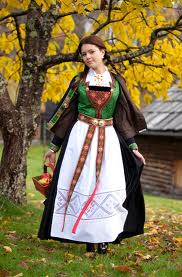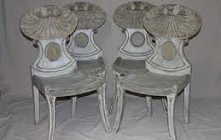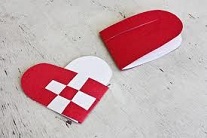National costumes are a wonderful way of reviving our heritage and treasuring it in every generation. Swedish National Folk Dress is no different. Swedes wear their Folk Dresses today with pride and dignity. Read our guide for more facts and inform
A trip down memory lane
Many centuries ago when Sweden was still an agrarian society, most people earned a living from agriculture. Naturally, each region had strong characteristics, which differed from each other in special ways. However, in each region they all wore folk dresses, built their homes the same, ate the same food and furnished their homes the same.
A time of confusion
Swedish folk dresses were a tool that reflected your place in society. These garments were so designed that they can tell you if you were married, your geographic location, your gender and occupation and social class. Hence, each region had its own color and style, which reflected many things.
A matter of identity
Sweden obviously had too many variants of national wear and when it was time to celebrate something as a nation, it became a nightmare, because too many people arrived in too many different types of traditional dress.
To combat this, a Swedish National Folk Dress was designed and promoted in 1903. The colors of the dress were taken from the national flag. However, it was not well accepted and only when Queen Silvia wore hers on Nation Day on June 6th 1983, did the rest of the nation begin to wear theirs as well. The Swedes realized that their new Folk Dress was also a link to time and place, which declared the citizens as “belonging together”.
It is all about comfort and national pride
“Din Svenska Dräkt” folk dress, translated into English meaning your Swedish Costume, became a garment to be proud of and is seen today at many different cultural events around the country.
Designed to give comfort and style, woman would be seen with either a skirt and bodice (usually a laced vest) and two separate pieces of garment, or the second way where the skirt and bodice is sewn together and worn as one piece. The colors of this Swedish folk dress consisted of blue, white and yellow alternating in the bodice and skirt.
The Apron is usually made of linen, cotton, crepe or silk and is the focal point of the costume. If the under garments are blue or red, the apron would always be yellow. The neck scarf is mainly embroidered with a variety of Swedish designs and is folded on the diagonal and worn on top of the blouse and vest.
The head covering comes in a variety of types that are folded and draped in elaborate forms and is always white. They often have ruffled lace edges to protect the fabric from oily hair. The waist bag is essential and is usually blue. It is worn outside the skirt and usually announces the province of the wearer.
The men were not left out and were elegantly styled to suit their female counterparts. The end result was a stylish embroidered vest in the same colors as the woman’s bodice. This could be in bright red or Swedish blue. Their pants were navy or black and a silk kerchief added to a stiff-collared white shirt.





